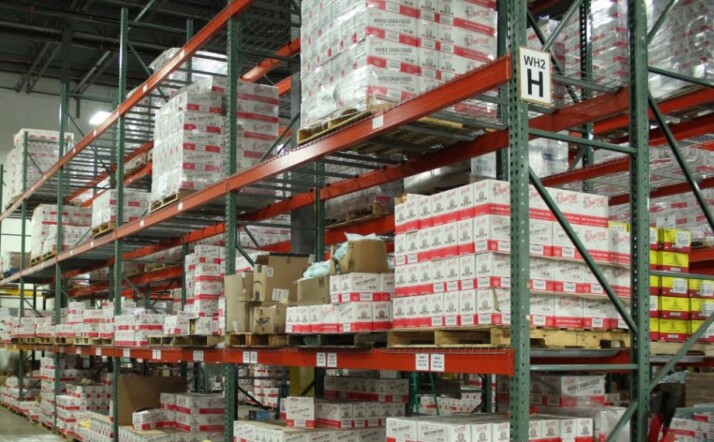Marketing mix distribution plays a huge role in growing a business. An excellent strategy for distribution channels is to use multiple types and methods to increase reach and sales.
In this article, we’re going to discuss these methods and other strategies you can use to distribute your products and grow your business.

What Is Marketing Mix?
We mentioned marketing mix in our introduction; if you’re not familiar with it, it is a marketing strategy. This strategy mixes four P’s: product, price, place, and promotion. A marketing mix aims to produce, promote, and sell a product by considering these four Ps.
To stay relevant and sustainable, a marketing mix must evolve and be able to track how effective marketing strategies are. This includes the use of market research, trends, and analytics.
In this article, we’re going to focus more on Place. This refers to companies’ distribution channels to get their products to their customers.
Marketing Mix Distribution Strategies
Here are some strategies for marketing mix distribution strategies.
1. Direct
Direct distribution is when manufacturers sell and send their products directly to consumers without the intervention of third parties or entities.
To directly distribute your product, you will need a warehouse to store your stocks. You will also need to establish a delivery process to get them quickly and efficiently to customers.
2. Indirect
An Indirect distribution strategy is using other means to disseminate your product to the market. Distribution is usually made through third-party retailers or other direct-to-consumer channels.
3. Intensive
A manufacturer can choose to penetrate the market by selling its goods to as many outlets as possible. This can be referred to as intensive distribution. This kind of distribution is most commonly used for candy bars, household goods, and drinks.
4. Exclusive
Exclusive distribution is when a manufacturer selects only a few sales outlets to sell its products. This creates exclusivity for an item or brand, such as luxury goods or exotic vehicles.
This strategy is especially effective for premium products that are considered to be collectibles. Exclusive distribution can benefit companies, but it is also the most difficult to implement successfully.
5. Selective
In selective distribution, products are distributed in a limited number of locations. The locations are selected based on the necessity of reaching the desired customer and their cost. Selective distribution is the most expensive to implement and would likely be utilized by large, established products.
Types of Distribution Channels
Here are the types of distribution channels.
1. Wholesaler
Wholesalers are distributors that buy items in bulk directly from manufacturers. They then sell these to other retailers at a higher price.
Because wholesalers place their orders in bulk, they can secure products for less money. They are primarily responsible for the storage and delivery of these goods. You can think of a wholesaler as the middle man between the manufacturer and the retailer. They rarely make direct contact with customers.
2. Retailer
Retailers are often considered storefront locations. Examples of these are supermarkets or department stores. But with technological advances, retailers can also be online websites or stores.
A retailer can obtain its products by buying direct from wholesalers or manufacturers. They then mark up the price of the item to make a profit.
3. Franchisor
Franchising is another excellent way to distribute products. This is when a business owner offers its products and branding to franchisors while expecting a kickback from the use of the franchise.
This kickback can be in the form of a percentage of sales or royalties. For franchising, the product can be available only in the area of a franchisee, an exclusive territory zone.
Organizations and manufacturers with an established customer base can benefit from this distribution channel without managing each location daily. Franchise distribution channels include well-known fast-food restaurants and some healthcare companies.
4. Distributor
Distributors are responsible for obtaining and transporting items from manufacturers to retailers or other destinations. Using a dedicated distributor means manufacturers do not have to deal with transportation logistics. They also won’t have to maintain shipping staff and materials.
Distributors may combine related products to make a bundle or package to generate more sales. For example, a distributor can bundle meals from associated restaurants or sell a remote with its batteries.
To Wrap Up
There are many marketing mix distribution strategies you can use for your business. You can choose different strategies depending on your products and your warehouse capabilities.
These strategies allow you to create and capture maximum sales, control your costs, and control the retail pricing.
Explore All 4P's of Marketing Articles
A Key Product Marketing Strategy Guide
In growing your business, it’s essential to conceptualize various methods to increase your sales. Product marketing helps you effectively promote your product…
The Key Definition of Pricing in Marketing Strategy
If you’re starting your own business, you should enlighten yourself about the 5 Ps of Marketing. This concept represents product,…
Marketing Distribution Channels: Types and Strategies
Marketing mix distribution plays a huge role in growing a business. An excellent strategy for distribution channels is to use…
Key Promotion Mix Elements That Increase Demand
Marketing is essential to the success of any business. It’s what helps a company generate leads and conversions. It is…
4 Key Product Mix Elements for Product Demand
Try to think of your favorite brands; you’ll notice that their business isn’t built on a single product. Instead, most…
Product Market Strategy Meaning, Importance, and Examples
Every business needs a solid marketing strategy. Companies rely on marketing to generate interest for its products and services. It’s…
